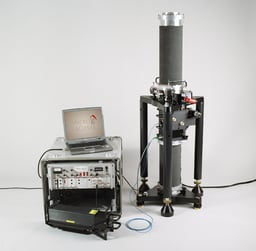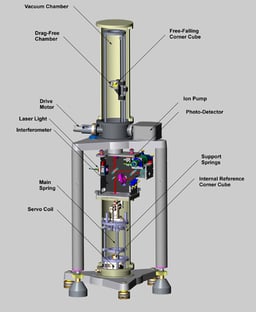Kilogram
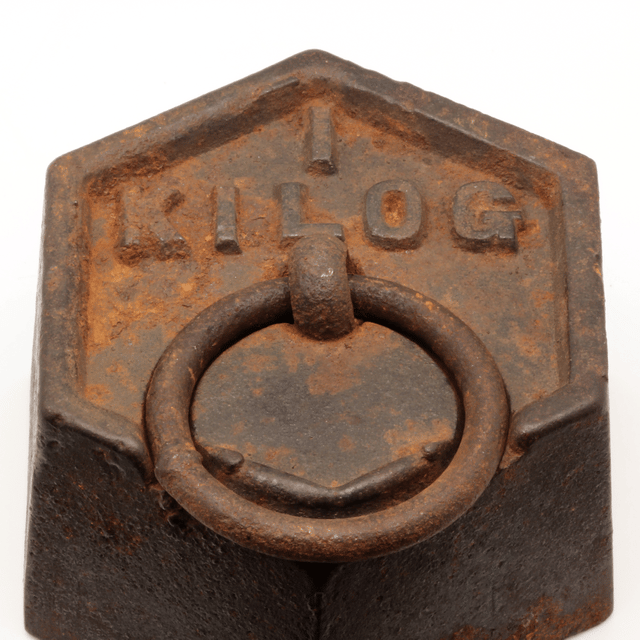
Kilogram

The kilogram (also kilogramme) is the base unit of mass in the metric system, formally the International System of Units (SI), having the unit symbol kg. It is a widely used measure in science, engineering, and commerce worldwide, and is often called a kilo. The kilogram is almost exactly the mass of one litre of water.
The kilogram was originally defined in 1795 as the mass of a litre of water. This was a simple definition, but hard to replicate precisely. In 1799, the Kilogramme des Archives, a platinum artefact, replaced it as the standard of mass. In 1879 a cylinder of platinum-iridium, the International Prototype of the Kilogram (IPK) became the standard of the unit of mass for the metric system, and remained so until May 20, 2019,[6] making the kilogram the last of the metric base units to be defined by a physical artefact.
Despite best efforts to maintain it, evidence accumulated that the mass of the International Prototype Kilogram had been changing; the IPK had diverged from its replicas by approximately 50 micrograms since their manufacture late in the 19th century. This led to several competing efforts to develop measurement technology precise enough to allow replacing the kilogram artefact with a definition based directly on physical fundamental constants.[6] This culminated in 2018 with a redefinition of the kilogram in terms of the Planck constant.[6] As a result of this redefinition, the kilogram is now defined in terms of the second and the metre, replacing the IPK as primary standard.[7] The new definition was approved by the General Conference on Weights and Measures (CGPM) on November 16, 2018.[8] Physical standard masses such as the IPK and its replicas still serve as secondary standards.
Definition
The kilogram is defined in terms of three fundamental physical constants: The speed of light c, a specific atomic transition frequency ΔνCs, and the Planck constant h. The formal definition is:
This definition makes the kilogram consistent with the older definitions: the mass remains almost exactly the same as the mass of a litre of water.
Previous definitions

A replica of the International Prototype Kilogram on display at Cité des Sciences et de l'Industrie, featuring the protective double glass bell. The IPK served as primary standard for the kilogram until 2019.
The development of the first metric system began about 1790. The initial mass unit was the grave, defined in 1793.[10] Within three years it was replaced by the kilogram. The gram, 1/1000 of a kilogram, was provisionally defined in 1795 as the mass of one cubic centimetre of water at the melting point of ice.[11] The Kilogramme des Archives was manufactured as a prototype in 1799 and served as a basis for the International Prototype Kilogram (IPK) in 1875. It had a mass equal to the mass of 1 dm3 of water under atmospheric pressure and at the temperature of its maximum density, which is approximately 4 °C.
The International Prototype Kilogram was commissioned by the General Conference on Weights and Measures (CGPM) under the authority of the Metre Convention (1875), and is in the custody of the International Bureau of Weights and Measures (BIPM) who hold it on behalf of the CGPM. The IPK was rarely used or handled. Copies of the IPK kept by national metrology laboratories around the world were compared with the IPK in 1889, 1948, and 1989 to provide traceability of measurements of mass anywhere in the world back to the IPK.
The kilogram was the last SI unit that was directly defined by an artefact rather than fundamental physical properties that could be independently reproduced in different laboratories.[6] Three other base units (cd, A, mol) and 17 derived units (N, Pa, J, W, C, V, F, Ω, S, Wb, T, H, kat, Gy, Sv, lm, lx) in the SI system were defined in relation to the kilogram, and thus its stability was important. The definitions of only eight other named SI units did not depend on the kilogram: those of temperature (K, °C), time and frequency (s, Hz, Bq), length (m), and angle (rad, sr).[12]
Replacement of the International Prototype Kilogram
After the International Prototype Kilogram had been found to vary in mass over time relative to its reproductions,[13] the International Committee for Weights and Measures (CIPM) recommended in 2005 that the kilogram be redefined in terms of a fundamental constant of nature. At its 2011 meeting, the CGPM agreed in principle that the kilogram should be redefined in terms of the Planck constant, h. The decision was originally deferred until 2014; in 2014 it was deferred again until the next meeting.[14] CIPM proposed revised definitions of the SI base units for consideration at the 26th CGPM.[15] The formal vote on 16 November 2018 approved the change.[16][17]
Name and terminology
The kilogram is the only base SI unit with an SI prefix (kilo) as part of its name. The word kilogramme or kilogram is derived from the French kilogramme,[18] which itself was a learned coinage, prefixing the Greek stem of χίλιοι khilioi "a thousand" to gramma, a Late Latin term for "a small weight", itself from Greek γράμμα.[19] The word kilogramme was written into French law in 1795, in the Decree of 18 Germinal,[20] which revised the provisional system of units introduced by the French National Convention two years earlier, where the gravet had been defined as weight (poids) of a cubic centimetre of water, equal to 1/1000 of a grave.[21] In the decree of 1795, the term gramme thus replaced gravet, and kilogramme replaced grave.
The French spelling was adopted in Great Britain when the word was used for the first time in English in 1795,[22] [18] with the spelling kilogram being adopted in the United States. In the United Kingdom both spellings are used, with "kilogram" having become by far the more common.[23][2] UK law regulating the units to be used when trading by weight or measure does not prevent the use of either spelling.[24]
In the 19th century the French word kilo, a shortening of kilogramme, was imported into the English language where it has been used to mean both kilogram[25] and kilometre.[26] While kilo as an alternative is acceptable, to The Economist for example,[27] the Canadian government's Termium Plus system states that "SI (International System of Units) usage, followed in scientific and technical writing" does not allow its usage and it is described as "a common informal name" on Russ Rowlett's Dictionary of Units of Measurement.[28][29] When the United States Congress gave the metric system legal status in 1866, it permitted the use of the word kilo as an alternative to the word kilogram,[30] but in 1990 revoked the status of the word kilo.[31]
During the 19th century, the standard system of metric units was the centimetre–gram–second system of units, treating the gram as the fundamental unit of mass and the kilogram as a derived unit. In 1901, however, following the discovery by James Clerk Maxwell that electric measurements could not be explained solely in terms of the three fundamental units of length, mass and time, Giovanni Giorgi proposed a new standard system that would include a fourth fundamental unit to measure quantities in electromagnetism.[32] In 1935 this was adopted by the IEC as the Giorgi system, now also known as MKS system,[33] and in 1946 the CIPM approved a proposal to adopt the ampere as the electromagnetic unit of the "MKSA system".[34] [] In 1948 the CGPM commissioned the CIPM "to make recommendations for a single practical system of units of measurement, suitable for adoption by all countries adhering to the Metre Convention".[35] This led to the launch of SI in 1960 and the subsequent publication of the "SI Brochure", which stated that "It is not permissible to use abbreviations for unit symbols or unit names ...".[36][3] The CGS and MKS systems co-existed during much of the early-to-mid 20th century, but as a result of the decision to adopt the "Giorgi system" as the international system of units in 1960, the kilogram is now the SI base unit for mass, while the definition of the gram is derived from that of the kilogram.
Mass and weight

Measurement of mass – the gravitational force on the measurand is balanced against the gravitational force on the weights.
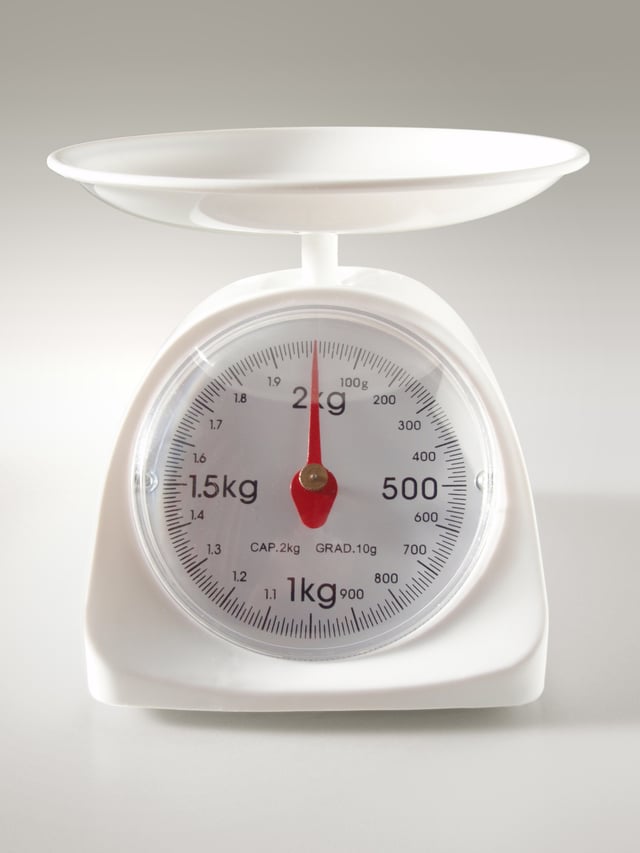
Measurement of weight – gravitational attraction of the measurand causes a distortion of the spring
While the weight of an object is dependent on the strength of the local gravitational field, the mass of an object is independent of gravity, as mass is a measure of the quantity of matter. Accordingly, for astronauts in microgravity, no effort is required to hold objects off the cabin floor; they are "weightless". However, since objects in microgravity still retain their mass and inertia, an astronaut must exert ten times as much force to accelerate a 10‑kilogram object at the same rate as a 1‑kilogram object.
Because at any given point on Earth the weight of an object is proportional to its mass, the mass of an object in kilograms is usually measured by comparing its weight to the weight of a standard mass, whose mass is known in kilograms, using a device called a weighing scale. The ratio of the force of gravity on the two objects, measured by the scale, is equal to the ratio of their masses.
Redefinition based on fundamental constants

The SI system after the 2019 redefinition: the kilogram is now fixed in terms of the second, the speed of light and the Planck constant, and the ampere no longer depends on the kilogram
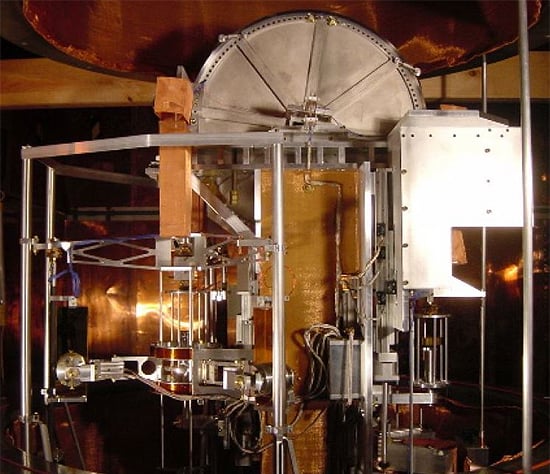
A Kibble balance, which was originally used to measure the Planck constant in terms of the IPK, can now be used to calibrate secondary standard weights for practical use.
The International Committee for Weights and Measures (CIPM) approved a redefinition of the SI base units in November 2018 that defines the kilogram by defining the Planck constant to be exactly 6.62607015×10−34 kg⋅m2⋅s−1, effectively defining the kilogram in terms of the second and the metre. The new definition took effect on 20 May 2019.[6][7][37]
Prior to the redefinition, the kilogram and several other SI units based on the kilogram were defined by a man-made metal artefact: the Kilogramme des Archives from 1799 to 1889, and the International Prototype Kilogram from 1889 onward.[6]
In 1960, the metre, previously similarly having been defined with reference to a single platinum-iridium bar with two marks on it, was redefined in terms of an invariant physical constant (the wavelength of a particular emission of light emitted by krypton,[38] and later the speed of light) so that the standard can be independently reproduced in different laboratories by following a written specification.
At the 94th Meeting of the International Committee for Weights and Measures (CIPM) in 2005, it was recommended that the same be done with the kilogram.[39]
In October 2010, the CIPM voted to submit a resolution for consideration at the General Conference on Weights and Measures (CGPM), to "take note of an intention" that the kilogram be defined in terms of the Planck constant, h (which has dimensions of energy times time) together with other physical constants.[40][41] This resolution was accepted by the 24th conference of the CGPM[42] in October 2011 and further discussed at the 25th conference in 2014.[43][44] Although the Committee recognised that significant progress had been made, they concluded that the data did not yet appear sufficiently robust to adopt the revised definition, and that work should continue to enable the adoption at the 26th meeting, scheduled for 2018.[43] Such a definition would theoretically permit any apparatus that was capable of delineating the kilogram in terms of the Planck constant to be used as long as it possessed sufficient precision, accuracy and stability. The Kibble balance is one way to do this.
As part of this project, a variety of very different technologies and approaches were considered and explored over many years. Some of these approaches were based on equipment and procedures that would enable the reproducible production of new, kilogram-mass prototypes on demand (albeit with extraordinary effort) using measurement techniques and material properties that are ultimately based on, or traceable to, physical constants. Others were based on devices that measured either the acceleration or weight of hand-tuned kilogram test masses and which expressed their magnitudes in electrical terms via special components that permit traceability to physical constants. All approaches depend on converting a weight measurement to a mass, and therefore require the precise measurement of the strength of gravity in laboratories. All approaches would have precisely fixed one or more constants of nature at a defined value.
SI multiples
Because SI prefixes may not be concatenated (serially linked) within the name or symbol for a unit of measure, SI prefixes are used with the unit gram, not kilogram, which already has a prefix as part of its name.[45] For instance, one-millionth of a kilogram is 1 mg (one milligram), not 1 μkg (one microkilogram).
| Submultiples | Multiples | |||||
|---|---|---|---|---|---|---|
| Value | SI symbol | Name | Value | SI symbol | Name | |
| 10−1g | dg | decigram | 101g | dag | decagram | |
| 10−2g | cg | centigram | 102g | hg | hectogram | |
| 10−3g | mg | milligram | 103g | kg | kilogram | |
| 10−6g | µg | microgram | 106g | Mg | megagram (tonne) | |
| 10−9g | ng | nanogram | 109g | Gg | gigagram | |
| 10−12g | pg | picogram | 1012g | Tg | teragram | |
| 10−15g | fg | femtogram | 1015g | Pg | petagram | |
| 10−18g | ag | attogram | 1018g | Eg | exagram | |
| 10−21g | zg | zeptogram | 1021g | Zg | zettagram | |
| 10−24g | yg | yoctogram | 1024g | Yg | yottagram | |
| Common prefixed units are in bold face.[4] | ||||||
The microgram is typically abbreviated "mcg" in pharmaceutical and nutritional supplement labelling, to avoid confusion, since the "μ" prefix is not always well recognised outside of technical disciplines.[5] (The expression "mcg" is also the symbol for an obsolete CGS unit of measure known as the "millicentigram", which is equal to 10 μg.)
In the United Kingdom, because serious medication errors have been made from the confusion between milligrams and micrograms when micrograms has been abbreviated, the recommendation given in the Scottish Palliative Care Guidelines is that doses of less than one milligram must be expressed in micrograms and that the word microgram must be written in full, and that it is never acceptable to use "mcg" or "μg".[46]
The hectogram (100 g) is a very commonly used unit in the retail food trade in Italy, usually called an etto, short for ettogrammo, the Italian for hectogram.[47][48][49]
The former standard spelling and abbreviation "deka-" and "dk" produced abbreviations such as "dkm" (dekametre) and "dkg" (dekagram).[50] The abbreviation "dkg" (10 g) is still used in parts of central Europe in retail for some foods such as cheese and meat.
The unit name megagram is rarely used, and even then typically only in technical fields in contexts where especially rigorous consistency with the SI standard is desired. For most purposes, the name tonne is instead used. The tonne and its symbol, "t", were adopted by the CIPM in 1879. It is a non-SI unit accepted by the BIPM for use with the SI. According to the BIPM, "This unit is sometimes referred to as 'metric ton' in some English-speaking countries."[51] The unit name megatonne or megaton (Mt) is often used in general-interest literature on greenhouse gas emissions, whereas the equivalent unit in scientific papers on the subject is often the teragram (Tg).
See also
1795 in science
1799 in science
General Conference on Weights and Measures (CGPM)
Grave (orig. name of the kilogram, history of)
Gravimetry
Inertia
International Bureau of Weights and Measures (BIPM)
International Committee for Weights and Measures (CIPM)
Kibble balance
Kilogram-force
Mass versus weight
Metric system
Milligram per cent
Newton
SI base units
Standard gravity
Weight


